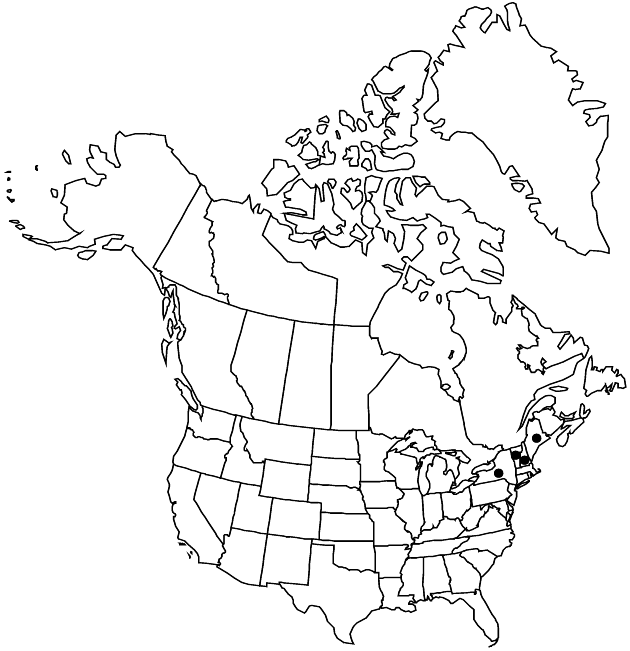Prenanthes boottii
Syn. Pl. 4: 1309. 1847.
Plants 5–25 cm; taproots short, thick, tuberous. Stems decumbent to erect, mottled purple, simple, glabrous proximally, tomentulose distally. Leaves: proximal present at flowering; petiolate (petioles 2–8 cm, not winged); blades ovate to deltate, 2–8 × 0.5–3 cm, bases hastate or sagittate, margins entire or weakly dentate, faces glabrous; distal reduced, elliptic to lanceolate. Heads (10–20) in narrow, racemiform to thyrsiform arrays (nodding). Calyculi of 4–5, dark green to blackish, subulate bractlets 2–5 mm, glabrous. Involucres cylindro-campanulate, 10–11 × 5–6 mm. Phyllaries 8–11, dark green to almost black, lanceolate to subulate, 8–12 mm, faces glabrous. Florets 9–20; corollas white, 7–13 mm. Cypselae light tan to yellow, subcylindric, subterete to angled, 5–6 mm, indistinctly 7–10-ribbed; pappi pale yellow, 6–8 mm. 2n = 32.
Phenology: Flowering Jul–Aug.
Habitat: Alpine areas above treeline, mountains
Elevation: 1500–2000 m
Distribution

Maine, N.H., N.Y., Vt.
Discussion
Of conservation concern.
Prenanthes bootii is recognized by its relatively short, decumbent habit, deltate to hastate proximal leaves, entire or weakly dentate margins, glabrous and blackish green phyllaries, white corollas, and alpine habitat.
Selected References
None.